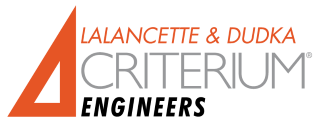 Reducing energy consumption to save money is at the top of everyone’s mind. In Vermont, our summers can often be stifling hot and humid while winters are bone chilling. And yet many of us rely on electric heat pumps to keep us comfortable year-round (or out-of-date and inefficient boilers and furnaces) as well as condensers and air handlers to keep us cool.
Reducing energy consumption to save money is at the top of everyone’s mind. In Vermont, our summers can often be stifling hot and humid while winters are bone chilling. And yet many of us rely on electric heat pumps to keep us comfortable year-round (or out-of-date and inefficient boilers and furnaces) as well as condensers and air handlers to keep us cool.
Data from the National Centers for Environmental Information of the National Oceanic and Atmospheric Administration over 128 years shows that Vermont temperatures are trending warmer. Luckily, technology is evolving as well.
The challenge, of course, is to create affordable and efficient heating and cooling systems that can handle the extreme differences in temperature as the seasons change. So, what is new?
The latest trends in high-efficiency HVAC (heating, ventilation, and air conditioning) systems focus on reducing energy consumption, lowering carbon footprints, and improving indoor air quality. Here are some key advancements shaping the industry:
HEAT PUMPS WITH ADVANCED TECHNOLOGY
● Cold climate heat pumps (CCHPs), also known as cold climate air source heat pumps (ccASHPs), are specifically designed to heat homes adequately in very cold weather, usually at or below 5 degrees Fahrenheit.
These pumps have better heating efficiency ratings – or heating seasonal performance factor (HSPF) – to maintain performance in cold temperatures. These pumps have advanced components such as variable speed compressors, optimized defrost cycles, and larger heat exchangers. These systems can be up to three times more efficient than current heating technologies, allowing for lower energy usage. They are designed to operate efficiently even in sub-zero temperatures, making them viable for northern regions.
● Variable refrigerant flow (VRF) technology divides a building into zones customized for comfort and energy efficiency. These all-electric VRF systems provide heating and cooling by cycling refrigerant between an outdoor unit and each zone’s ductless or ducted indoor unit(s). Up to 50 indoor units can connect to a single outdoor unit. Zones have individual set points based on usage, occupancy, typical solar loads, and user preferences, allowing precise temperature control and high efficiency by adjusting the refrigerant flow based on demand.
● Geothermal heat pumps
Leverage stable underground temperatures for heating and cooling, significantly cutting energy use. These systems work by having fluid circulated through pipes buried in the ground near a building. The fluid absorbs heat from the ground when it is cold outside, or releases heat into the ground when it’s warm. The pump concentrates the heat and transfers it to the building. These systems are very energy efficient.
SMART HVAC SYSTEMS AND AI INTEGRATION
● IoT-connected thermostats (devices like Nest or Ecobee) connect with HVAC systems to optimize efficiency based on occupancy and external conditions. These smart devices integrate HVAC IoT sensors and IoT sensor networks to monitor and regulate temperature and humidity levels more effectively and customize settings based on room usage.
ENERGY RECOVERY VENTILATION AND DEMAND-CONTROLLED VENTILATION
● Energy recovery ventilation (ERV) systems are ideal for climates with extreme temperatures and high humidity. They work by using two fans to simultaneously pull fresh outdoor air in and exhaust stale indoor air out, while passing both air streams through a heat exchanger core that transfers heat and moisture between them, essentially “pre-conditioning” the incoming fresh air with the energy from the outgoing stale air, thus minimizing energy loss when ventilating a space.
● Demand-controlled ventilation (DCV) system sensors adjust ventilation rates based on occupancy levels, preventing unnecessary heating or cooling in unoccupied spaces. Sensors, like CO₂ detectors, determine when to increase or decrease ventilation, ultimately aiming to save energy by only providing the necessary level of ventilation at any given time.
HYBRID HVAC SYSTEMS AND ALTERNATIVE ENERGY INTEGRATION
● Solar-powered HVAC systems integrate with rooftop solar panels to reduce grid dependency. The system utilizes the sun’s energy to put heat into the refrigerant. This process replaces a portion of the energy the compressor would normally put into the system from the electrical network in the building, thus reducing energy usage.
● Hybrid heat pumps combine gas furnaces with heat pumps for optimized energy use based on outdoor temperatures. Hybrid systems can be more energy efficient than traditional systems and can help reduce a home’s impact on the environment. The system automatically switches between the heat pump and furnace based on the temperature. The furnace takes over in very cold weather to avoid running the heat pump inefficiently.
Combined with all of these technologies is the development of refrigerants known as low-GWP (global warming potential) such as R-32 and R-454B to replace the high-GWP options such as R-410A, one of the most common refrigerants used today.
The real message here is that you have options. When you call to have an HVAC system replaced, you should always explore many alternatives. Some of these alternatives have higher upfront costs, but over the long term can yield major energy savings and a smaller carbon footprint for your community.
Written by Andrew Dudka for Condo Media April, 2025
President Criterium-Lalancette and Dudka Engineers
President Criterium-Dudka Engineers
